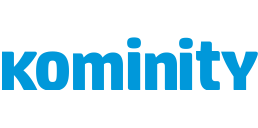Learning
The Case for Continual Learning
Back in 1980, Ursula Burns joined a company as an Intern, then became a full employee a year later. She took roles in product development, planning, and later as an executive assistant. In less than 2 decades, she rose to become a vice president and later the CEO/Chairman of the company – which had risen to become one of the top companies in the world.
HER SECRET
On being asked how she has been able to wear different hats at different times and still steadily grow her career to become the first female black CEO of a Fortune 500 company, she responded with a lesson she had learnt from one of her mother’s sayings, “You have to learn and you have to be curious.”
THE BASICS
Curiosity and the desire to apply the learned are the primary drivers of lifelong learning. Far more than certificates which are just are an evidence of learning. Lifelong learning a.k.a Continual learning is what makes it possible for professionals to keep growing in knowledge and skills, and be able to contribute to the growth of their organizations.
How does one learn continually while working? It starts by knowing your current skill gaps, where you want to be and the necessary knowledge and skills required to get there.
Your knowledge of these skill gaps makes your learning guided. Even though you don’t need to be able to figure it out all at once. You having an idea of your skill gaps will help you to be able to take a proactive approach to your professional development, rather than just reacting to what’s trending per time. Only to realize you have spread yourself too thin, learning things that you struggle to relate together. Making it difficult to connect the dots.
IDENTIFYING YOUR SKILL GAPS
Identifying your knowledge and skill gaps can be done personally or by taking external feedback. A personal approach requires giving sincere answers to personally reflective questions such as:
- What do I need to learn to be better at my current job?
- What skill would have helped me to do better on the last project?
- What confuses you or is never clear when it is being discussed, you reading or working on it?
- For the role I want to fill and the responsibilities I want to take, what do I need to know and what skills do I need to acquire to be better qualified for it and guarantee my success?
Your answers to these questions will provide insights on your knowledge and skill gaps. Going further, you can get answers to them by asking your colleagues or manager at work, provided they will be sincere with you.
Another approach to identifying your knowledge gap is spotting individuals who you admire in your field or who currently do what you (or want to) do better. They could be colleagues at work. Interact with them and/or observe them closely to know what they know and the skills they have, which are key to the level of their performance, where you are also aiming to be.
For those that you don’t have direct access to, you can get to know more about them by checking them out online. Their LinkedIn profiles will provide clues to their experiences and educational background. The skill sections will directly reveal the skills they possess.
It is most likely to be first intimidated by what you see. Leading you to think of your limitations, rather than your potentials. Don’t panic. Remember to put your Growth Mindset to work. Instead of concluding that you can’t. Think of How you can and will.
Identifying your knowledge and skill gaps is just the beginning. The compass to direct you in your continual learning journey. The next step is in the learning itself when can occur Formally or Informally. The applications of these two modes and which is best for you per time are insights that will be further shared. Most importantly, for now, hoping you have a grasp of your knowledge and skill gaps to guide your lifelong learning.
Todo: Formally writing down your knowledge and skill gaps will help you to take action. Do this by revisiting the session on identifying your skills and knowledge gaps above. Write them in a physical or digital note app you will likely revisit.



